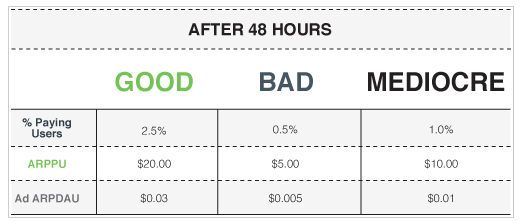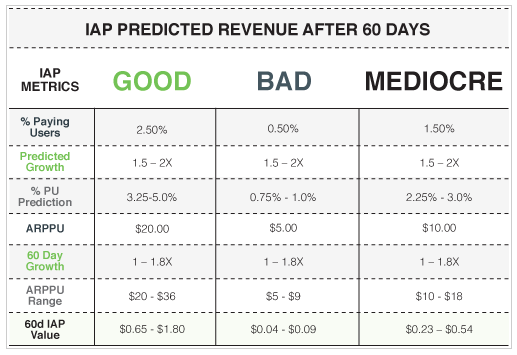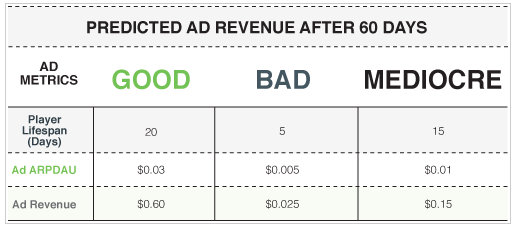Everything is decided in the first 48 hours, says John Walsh, executive director of Fuse Powered monetization service.
It is considered that the chances of playing for life can be judged by the metrics of the first month. This is not the case, Walsh is convinced. It is necessary to take the indicators of the first two days: it is based on them that you can predict what awaits the game – will it make Clash of Clans move on the pedestal or will no one play it except your girlfriend.
If you study the metrics of the first 48 hours, you can not only find out whether the project will float or sink. In the early stages, the game can still be changed so that it is more successful, Volsh believes. He and the Fuse Powered team studied statistics on successful, average and failed mobile games. They collected data for the first 48 hours of the life of these games, then for 7 days, 30 and 60.
Here’s what they managed to find out.
After 48 hours, the game “fired” if:
- paying users at least 2.5%;
- ARPPU or average income per paying user – $20;
- advertising revenue per user per day (Ad ARPDAU) – $0.03.
The performance of the game in the first 48 hours. From left to right: successful game, failed and average
Walsh believes that having data on the first 48 hours of the game, you can make predictions for the first 60 days.
From the data that Fuse Powered has collected, it is clear that, on average, mobile games (depending on the genre)
- the percentage of paying users increases by 1.50-2 times within 60 days;
- ARPU grows 1-1.8 times compared to the indicators of the first 48 hours;
- the average income from microtransactions per user per day (IAP ARPPU) increases by 1.5-3.5 times compared to the first 48 hours.
Dynamics of growth in the percentage of paying users for the first 60 days of the game’s life, depending on the genre
With these statistics in hand, it is easy to calculate what awaits the game in the first 60 days of life.
IAP revenue forecast for 60 days. From left to right: successful game, failed and average
Advertising revenue forecast for 60 daysPlayer Value forecast for 60 days
In the first two days, the main problems of the game are revealed.
If you solve them, the project will not disappear on the far shelves of stores, but it will reach the buyer.
These are the problems:
- low retention rate;
- low percentage of paying players;
- players spend little;
- inefficient advertising placement.
Low retention rate
Walsh is not afraid of obvious truths: retention is a key metric. Players should not be bored at the stage of the game cycle. If they are bored, they do not play, if they do not play, then they will not be able to monetize them. The end of the story.
When the game is out, it is useless to make changes to the game cycle. If the problem turned out to be in it, then it is better to cover up the project, and spend the marketing budget on a new game. But it also happens that the game cycle is made in the best traditions of frituplay, and retention rates are still relatively low.
Reasons:
- an inarticulate tutorial. The player just doesn’t get to the key loop of the game. The solution is to optimize the training part. Let’s add that we have already analyzed the case, when by simply changing the tutorial, developers were trying to improve the metrics of the game;
- the developer neglects game notifications. Sometimes the user needs to be reminded that lives have been restored, the factory has been completed, and the enemy is attacking the borders.
Low percentage of paying players
Players like the project, and they play it for hours. But for some reason there is still not a single million in your account.
Reasons:
- IAPs don’t appear “at the right time in the right place”. The player does not know, for example, that you can kill too strong an opponent for just a couple of dozen rubles;
- the IAP acquisition process is featureless. The player does not have the feeling that he has acquired something valuable, which means that there is no pleasure from buying.
As an example of a successful IAP design, let’s give Fallout Shelter. The player receives a lunchbox with items for his money. The rarest of them open to bravura music and are highlighted in gold and silver.
Players spend little
Users come to your game and leave their money there. But the amount earned does not even cover the cost of office cookies.
The reasons here are almost the same as in the previous paragraph. Walsh believes that if players buy poorly, you:
- neglect promotions, lucrative offers and other marketing tricks;
- don’t segment players by how and how much they are willing to pay;
- selling players what they don’t need;
- we’ve been tricked with the prices (a chest with five crystals can’t cost as much as an average paid game!).
Decisions:
- balance the gaming economy. Offer the player more high-quality content (Seppo Helava, co-founder of Self Aware Games, talks about what high-quality content is);
- offer more to those who already spend more, and less to those who are greedy (about how to “sharpen” payments for a specific user, says Playkot studio game designer Yulia Musienko).
Inefficient advertising placement
Everything is simple with advertising, says Walsh. She either works for the project or against it.
Problems:
- too many ads;
- inappropriate advertising (for example, a peaceful housewife of forty years old in the middle of a session in a caramel match-3 can not get rid of the video This war of mine);
- you work only with native advertising networks, as a result, users from other countries see videos in a language that they do not understand (you show, for example, a video about a Danish word puzzle to a Chinese teenager).
Decisions:
- place it where the game makes a natural pause (for example, between levels);
- work with advertising grids that localize offers for a specific country.
The main advice that Walsh gives: work on the weakest indicators. They not only show where you have underperformed. Their improvement will give the maximum effect. No matter how good your game is, you can always make it better.
A source: http://www.gamesbrief.com
Other materials on the topic:






